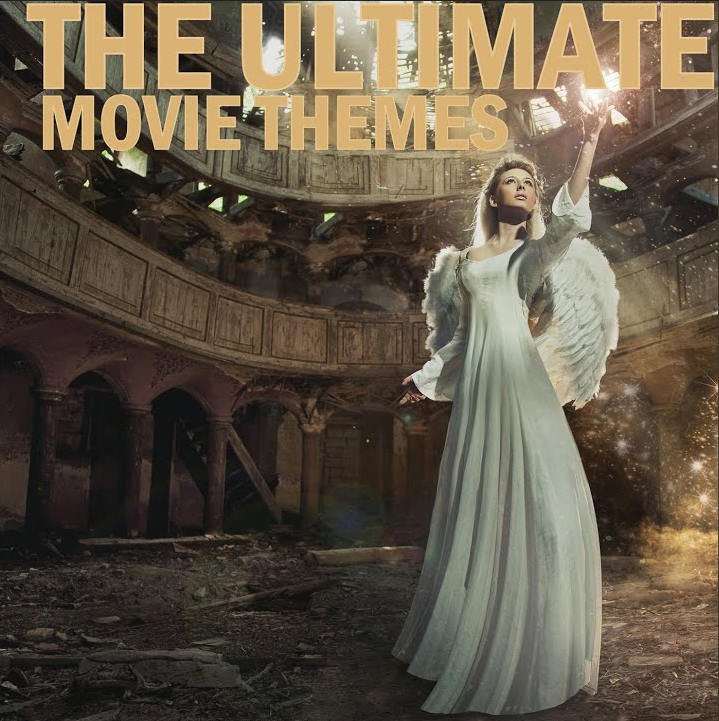Fake Orchestras
Around the year 2000, my then teacher of Portuguese at school asked me, since I was known to like all that weirdness which is classical music, about Gershwin’s Rhapsody in Blue. I think she asked me what that music was, which she had listened to in a soap opera, I answered, and for some reason I ended up giving her the CD I had with the piece. By that time I still thought that if someone accepts a gift it must mean not to despise the giver; but no, gentle reader, that only means the receiver really wanted the gift.
I really liked another piece in that CD, a recording of Barber’s Adagio for Strings. Nowadays I find it too long and boring and saccharine, but I have been searching for that blooming CD ever since, having forgotten what exactly it was, except that the cover was somewhat pink and the Adagio’s recording had a harp in it. Not enough to find it, easily at least.
Now then, thanks to the all-encompassing fury of digitising everything for the internet, so that everything can be forgotten forever among the resulting heap of rubble, I had more luck yesterday. I remembered there was Gershwin’s piece in it to, as I told you, and so I hunted for CDs from before the year 2000 with it.
Initially I tried to convince myself it was Bernstein’s recording (ytCLIqcBu7ASs) with the Rhapsody, Copland’s Appalachian Spring and the Adagio. I never particularly cared for the guy, and there is no trace of harp in the recording, so fortunately it wasn’t his. Note however how many releases it has, seven, since the recording in 1982. This theme of milking to death the musical cow will continue.

Then I saw many others as I sifted. One with a promising harp in the cover, with all musicians duly doing their best penguin cosplay on a place trying too hard to be fancy (ytbkfBprnpR6c). It wasn’t that one either, but the American in Paris rang a bell.

After some more searching I found this very image above, saying it’s from 1988. Somehow the cover boasting the CD’s duration doesn’t strike me as a good sign. Seeing the cover made me half remember the circumstance: an old department store, lots of funny tables with spaces to fill lots of CDs vertically, so one could browse through them. This was around the time CD players came to Brazil, and as I remember the good recordings were hard to find and the cheaper ones came in droves, so that’s probably how I got that one. This is only half the story, however. Who the hell recorded it?
Apparently it was some Amsterdam Promenade Orchestra, conducted by a Eduard Levin, this one who appears to have recorded something else in Russia in 1967, then this one in 1988, and that’s all. Weird. The orchestra does exist but the recording isn’t on its album list. Perhaps the recording does have something to do with the Netherlands.

This recording is only ~4:47 minutes long, compared to the ~8 minutes of the usual ones. So it isn’t simply a recording: someone had its way with the piece and chopped it off somewhat. As I dug further, I found many reworkings of it: one by some London Starlight Orchestra (yt8XNPwKLrt2Y), released in 2018-05-25, with a really really terrible cover, shown above; another (ytpr-GddsbSsw) with the addition of a flute solo by some Antoinette Ventura (who probably doesn’t exist either), from a little earlier, 2018-02-21. Finally I’ve found this one, (ytPtBUl8WKeL4), by that orchestra alone, date unknown, but with a very enlightening comment:
(arr. & prod. by Ed Starink)
Now we have a name. Ed Starink defines himself as
[…] the Dutch composer, pianist, session musician, sound engineer and producer Ed Starink, who set the standards of electronic synthesizer music for the last three decades.
He realized his own visions of the music of Vangelis, Jean-Michel Jarre, Jan Hammer, and many other Grand Masters of the métier, but did not neglect to create his own highly noteworthy compositions.
The recording is a synthesized arrangement of the piece! I wonder how common this is. Reading further on his biography:
Ed Starink is also known as:
- Eduward Starink (real name)
- Edgar Starink (as a member of the band “Gamma”)
- Eddy Starr [Orchestra]
- Star Inc.
- London Starlight Orchestra
- Philippe L'Auran
- London Studio Orchestra
- Hollywood Studio Orchestra
- Broadway Stage Orchestra
- A Close Call
I’m guessing Edward Levin is also one of his pseudonyms, and that the orchestra being from Amsterdam, naturally, has to do with him being dutch. From his site I get a sense of that old technological optimism of fixing the world with synthesizers and the homogeneized esoterism of the New Age movement, Enya, science fiction, and cosmic sounds invoked by early computers. Alas, that aura is almost gone now. I’m going to listen to some of his works, since fate decreed that I would hear it first unknowingly.
On the subject of budget recordings and pseudonyms, this page might be of interest:
There is a subset of "classical" releases which are credited to performers who have never been seen or heard in a live performance. Many of these performers are pseudonyms. Why would a release be published under a pseudonym? It could be because the performer has a restrictive contract with a different record label. It could be because the performance has been "borrowed" from its owner. Or perhaps the pseudonym is considered more marketable: for example the “well-known” pianist M. Bergerich (ie. in order for us to thing it was Martha Argerich). In the case of an ensemble, it could be a "scratch" ensemble brought togther just for the recording, and which does not otherwise have a name.
But that’s enough perscrutation for now.
